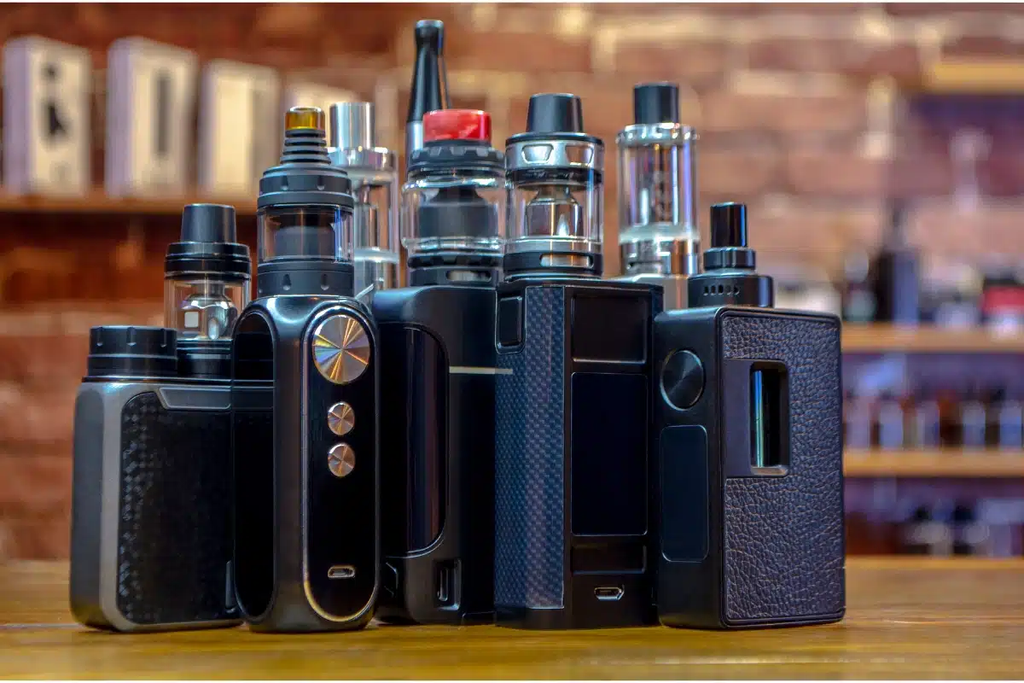
The Tobacco Products Directive was passed by the European Union in 2014 and came into effect in the UK in May 2016. Its primary purpose was to regulate the sale and manufacture of tobacco and related products, including e-cigarettes and e-liquids. Although the UK has left the EU, the laws derived from the directive still apply.
This article explains the Tobacco Products Directive (TPD) and why it still applies in the UK even after Brexit. It will help you understand how it protects you as a vaper and offer tips on how to ensure you’re buying safe, legal e-liquids from a reputable manufacturer.
How the TPD Became Law
As vaping became more popular, there were growing concerns around product quality, misleading claims and safety. The presence of harmful substances and inconsistent nicotine levels was a big concern.
The EU introduced the TPD to ensure a high level of health protection for consumers while still allowing smokers to switch to less harmful alternatives.
In the UK, the Tobacco Products Directive was implemented through domestic legislation known as the Tobacco and Related Products Regulations 2016 (TRPR). This remains the law governing the sale and marketing of vape products today.
Even though the UK officially left the EU in January 2020, the TPD still applies because it retained all existing EU laws, unless those laws were actively replaced or repealed.
So far, the TRPR, which enforces TPD rules in the UK, has remained essentially unchanged. There have been some amendments, but fundamentally, it remains the same as the implementing requirements of the TPD.
Key Rules and Restrictions
The TPD and TRPR introduced several important safety and quality standards for vaping products. They aim to protect consumers from poorly made or unsafe e-cigarettes and e-liquids. Limits were introduced regarding the amount of e-liquid that can be sold.
For example, tanks and pods cannot exceed 2ml in capacity, and refill containers for sale cannot contain more than 10ml of e-liquid. This encourages safer use and helps to control nicotine intake.
Nicotine strength was also targeted, with a limit of no more than 20mg/ml to ensure vapers don’t unknowingly consume unsafe levels.
There is also a requirement that doses be delivered at consistent levels under regular use, and some ingredients and additives have been banned. This includes colourings, caffeine and taurine.
Packaging and labelling must incorporate safety features, such as clear labelling of all substances contained in the product, as well as the nicotine strength. As with cigarettes in the UK, health warnings must be provided and the products must be child-resistant and tamper-proof.
E-cigarettes must be protected against breakage and leakage, and they must have mechanisms that support refilling without leakage.
Product Notifications were introduced to ensure that, before a product can be sold, it must be:
Notified to the MHRA (Medicines and Healthcare products Regulatory Agency)
Tested for nicotine content, emissions and toxicology
Notified to the MHRA six months before going to market for new products
Regarding marketing of e-cigarettes, it is prohibited to promote e-cigarettes in print media, on the radio and on television. These regulations apply to all manufacturers, importers and retailers selling vape products in the UK.

Why It’s Essential to Buy from a Reputable Manufacturer
In both the online and offline worlds, a black market will always exist. Whilst many are tempted to dabble for some quick savings, there is a stark reality regarding e-liquids. You will not know what they contain unless you purchase them from a reputable supplier.
Reputable brands follow stringent manufacturing and sales processes, use high-grade ingredients and test their products thoroughly. They are legally obligated to. They also submit full notifications to the MHRA, ensure their packaging meets UK standards and notify the MHRA of any suspected adverse health effects caused by their product.
Some imported or black-market e-liquids may contain banned ingredients or unsafe nicotine levels. Given the risk to our health by ingesting toxic chemicals, it is certainly not worth the risk. Counterfeit products may resemble well-known brands but often fail to meet safety requirements.
They can cause allergic reactions, nicotine poisoning or even damage to your device. It is scary that not all damage to our health can be detected until it is too late, so always use a TPD-compliant e-liquid producer.
How to Spot a Legitimate Product
Legitimate products are compliant with the TPD and TRPR. They provide clear labelling and batch numbers, detailing the nicotine strength. The look and feel of the product will also likely be superior with quality packaging, clear print and correct spellings.
Changes Since the TPD Was Introduced
Even though the TPD made significant enhancements to the manufacturing, selling and purchasing of e-cigarettes, the industry hasn’t stood still. There have been further developments to protect vapers.
There has been a ban on disposable single-use vapes. This helps prevent waste but will also help ensure higher-quality vaping mechanisms are available.
The Tobacco and Vapes Bill is currently progressing through parliament. It aims to give the government power to restrict vape flavours and change how vapes are displayed in shops.
Device innovation has accelerated, with better coils, safer batteries and more innovative pod systems.
Public health perspectives have shifted, with organisations like Public Health England supporting vaping as a cessation and harm-reduction tool for adult smokers.
Why the TPD Still Matters Today
Years after its introduction, the Tobacco Products Directive remains a vital tool in protecting consumers from harmful or untested products. It plays a significant role in ensuring consistency across all vape products sold legally in the UK, providing consumers with confidence in vape retailing.
It is through this confidence that responsible harm-reduction strategies can work. Without the TPD and TRPR, the vaping market could be flooded with unsafe products, causing real harm and damaging the industry’s reputation. Although some people may feel the need to try counterfeit products, more enforcement of regulations will help protect these individuals.
